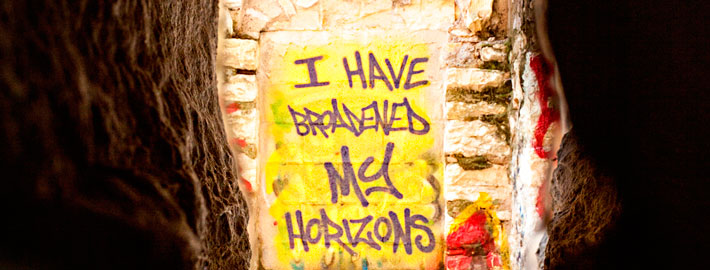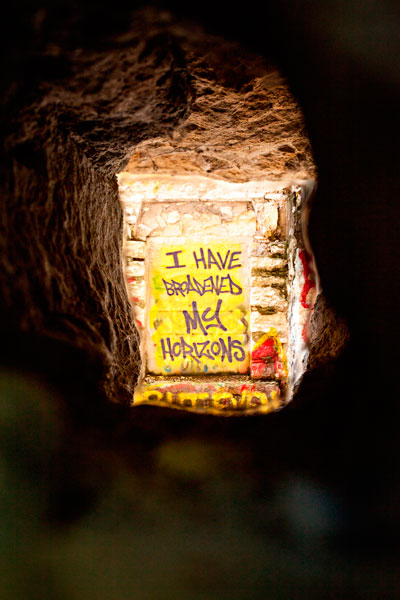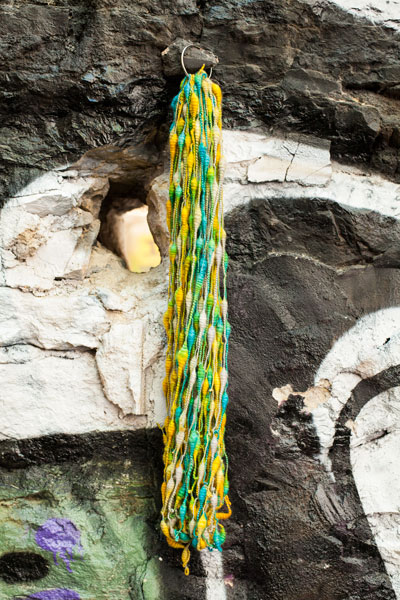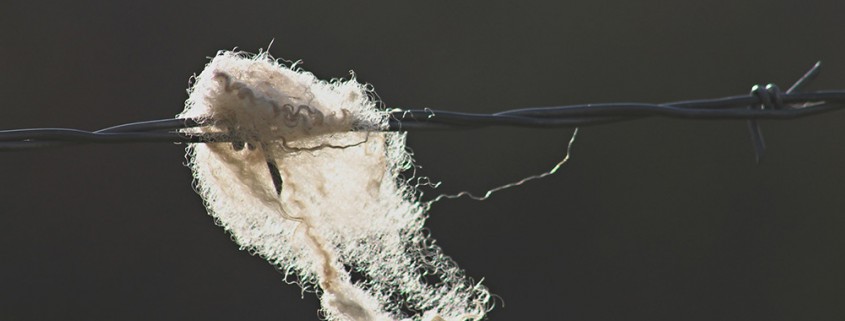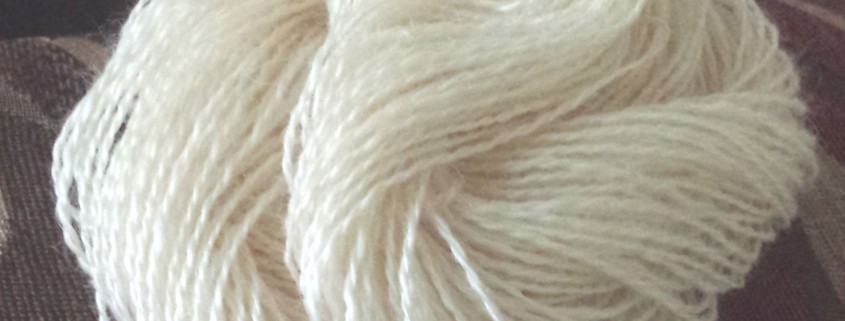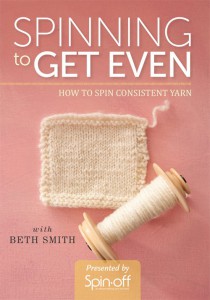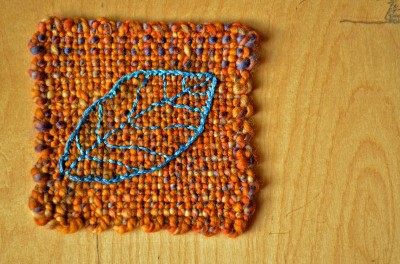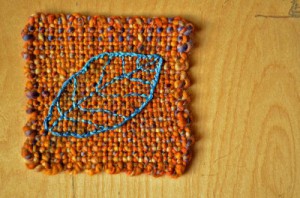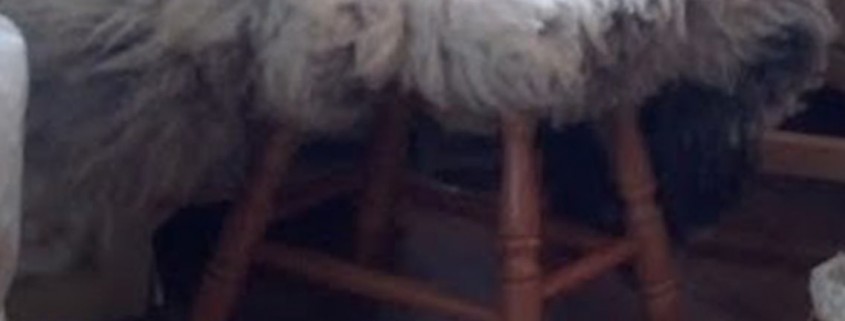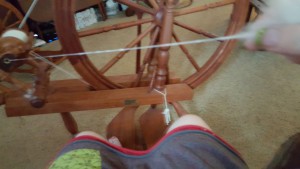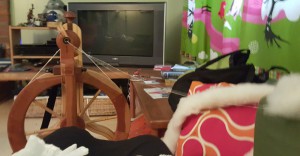One of our sponsors for PLY Away is The Spinning Loft – and today, Alison from The Spinning Loft is here to introduce us to her business and give us some sneak peeks of what she’ll be bringing with her to PLY Away! Here’s Alison …
——————————————————————————————————–
Have you heard? The Spinning Loft is both a sponsor and a vendor at PLY Away!
We were so excited to hear about PLY Away that we had to throw our hat in with Jacey and the PLY Away crew. With such a great group of teachers and classes, fantastic vendors, and the backing from such an amazing publication, there was no way we could say “No.” More importantly the conference is a perfect match to our mission: The Spinning Loft exists to help bring shepherds and spinners together through fleece, and in so doing, to help preserve rare breeds.
It’s our pleasure to work with shepherds and to make their wool available to our fellow handspinners. We seek out shepherds everywhere with quality rare and heritage breeds, from Hog Island here in Maryland to Gammelnorsk Sau (the wool that made the Viking ship sails!) from Norway. We have the distinct pleasure of making these fleeces accessible to spinners, explain what characteristics make the breed, and help them explore these breed’s unique qualities.
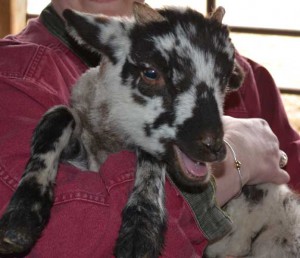
Alison holding a Hog Island lamb
It is a great partnership that enables us to keep what we both love – the farms and the sheep – alive. The shepherds are compensated fairly for their work and the quality of the fleeces and we are able to introduce spinners to some really wonderful fibers.
That’s a big complicated mission, but it comes from a single starting point – a passion for wool. I love doing this – I love the wool and I love to expound on its wonders.
I started spinning like so many do, with commercially prepared fiber. Then I learned how to process my own fleece from raw, attended my first breed study class, and began expanding my exposure to different breeds.
Beth Smith, then owner of The Spinning Loft, changed my relationship to wool forever. We attended her breed study class in which we explored 12 different breeds of sheep. We explored fine wools and coarse wools, crimpy wools and dual coated wools. Wools from sheep I had never seen before. She also told us about the forthcoming book by Deb Robson that was all about the wool from different breeds of sheep.
I was hooked.
By the time The Fleece and Fiber Sourcebook came out, I had sampled about 40 breeds – nearly all the sheep commonly available in the United States. And when Deb did her book signing at Maryland Sheep and Wool, I stood in line for my copy and a signature … bouncing up and down so energetically that Deb declared she had “never seen someone so excited to buy a book about wool.” I simply loved the idea of the book so much – and the sheep – I couldn’t contain my joy and enthusiasm!
I have taken several breed study classes since and I have sampled over a hundred breeds (and counting). With every new breed I sample, I become more and more enamored with wool. Every time I have the chance to try a new breed, I find myself just as giddy as the day I acquired my copy of The Fleece & Fiber Sourcebook. It is this excitement and fascination in other spinners that I try to foster with The Spinning Loft, and it is particularly exciting when a brand new spinner – or a spinner brand new to breed study, or even a spinner brand new to a different breed – discovers all those breeds of sheep.
It was this passion that led me to buy The Spinning Loft from Beth. We both wanted the mission to continue and to share the joy of All The Wools. Sheep have so many different types of wool and so many uses for it, I’m just never bored. Trying new wools is exciting – discovering their properties, what I can do with them, how they feel in my fingertips, how they spin, what the yarn looks like, what the finished object looks like. It’s so easy to see why so many breeds have evolved – either through locality or through breeding for characteristics. And it makes me sad when we face the loss of a breed of sheep – what characteristic of their wool and what features that enrich us will be lost too?
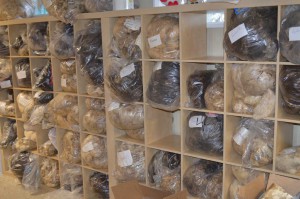
The Wall of Fleece
We generally have over 50 unique breeds in raw fleece in stock, as well as commercially prepared top, with more fleeces always on the way based on shearing schedules. That’s quite a Wall of Fleece.
We can’t bring the WHOLE wall with us to PLY Away – but we are certainly going to bring as much of it as I can pack into my truck. Accompanying the Wall will be processing tools, wool scour, wash and rinse, and some of those valuable fleece guides and books about spinning different breeds into the yarn you want.
And maybe, just maybe, I’ll be bouncing with excitement to share a new breed sample with Deb Robson, Beth Smith, and all of you!
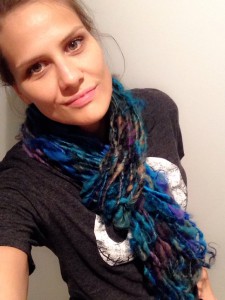 Arm knitting works well for that special skein that is too beautiful to knit regularly, or just the latest crazy yarn off your wheel looking for a life of its own. Yes, you could wear the skein around your neck – but if you want something more “finished,” this is a good way to go.
Arm knitting works well for that special skein that is too beautiful to knit regularly, or just the latest crazy yarn off your wheel looking for a life of its own. Yes, you could wear the skein around your neck – but if you want something more “finished,” this is a good way to go.
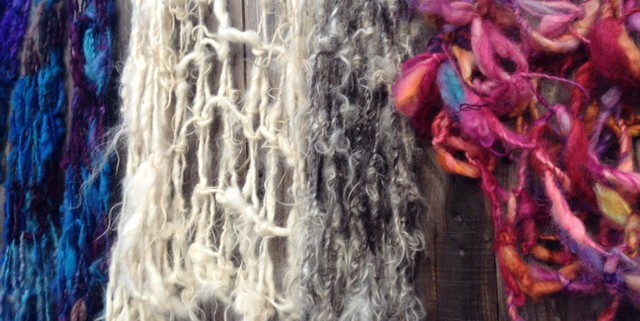
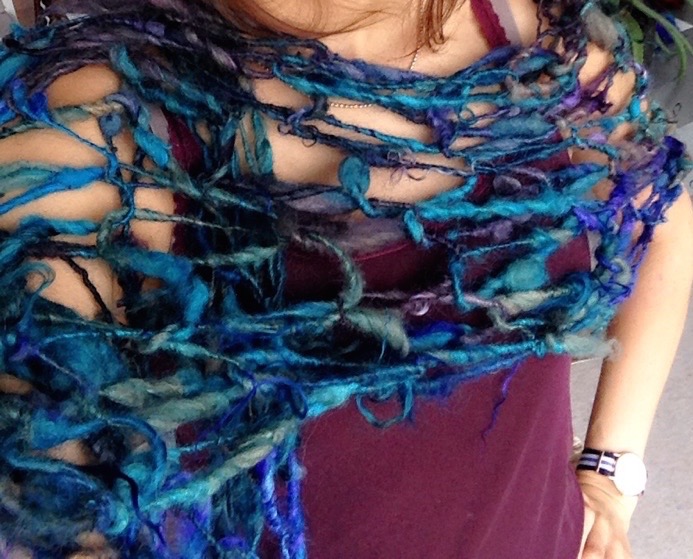
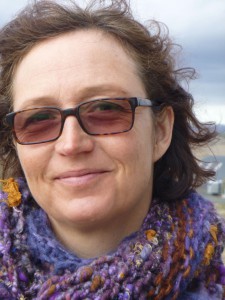
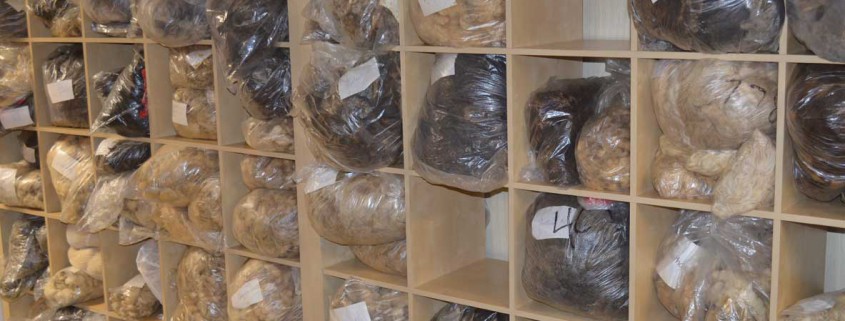



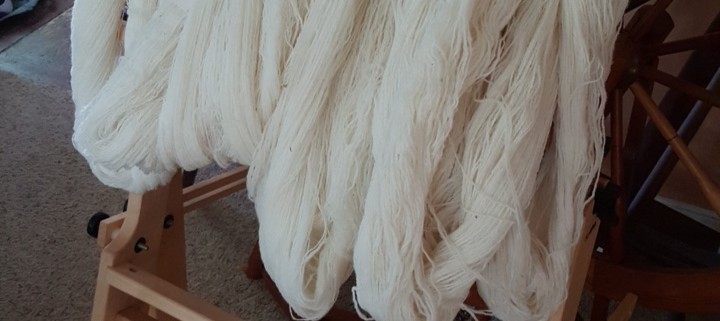
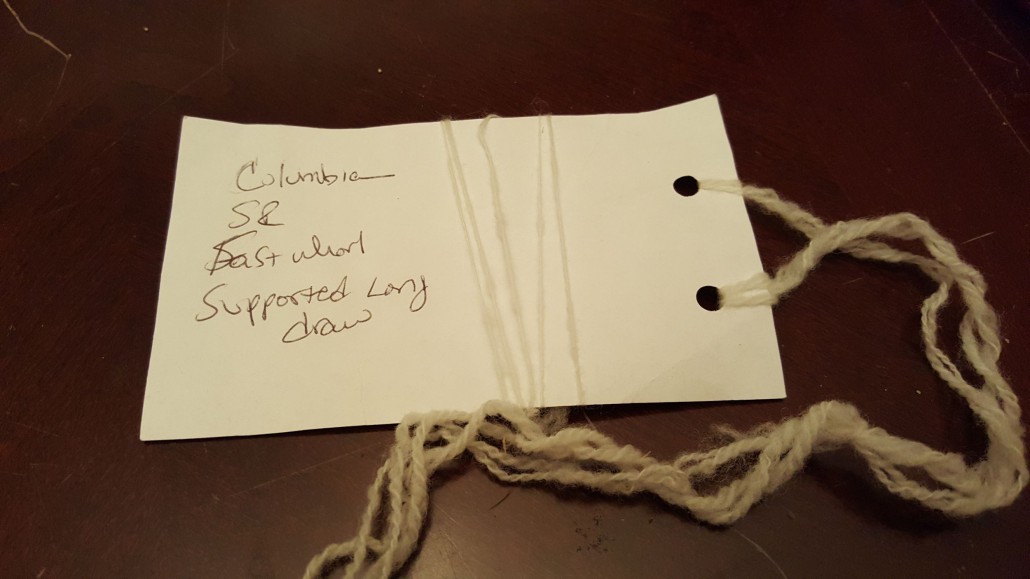
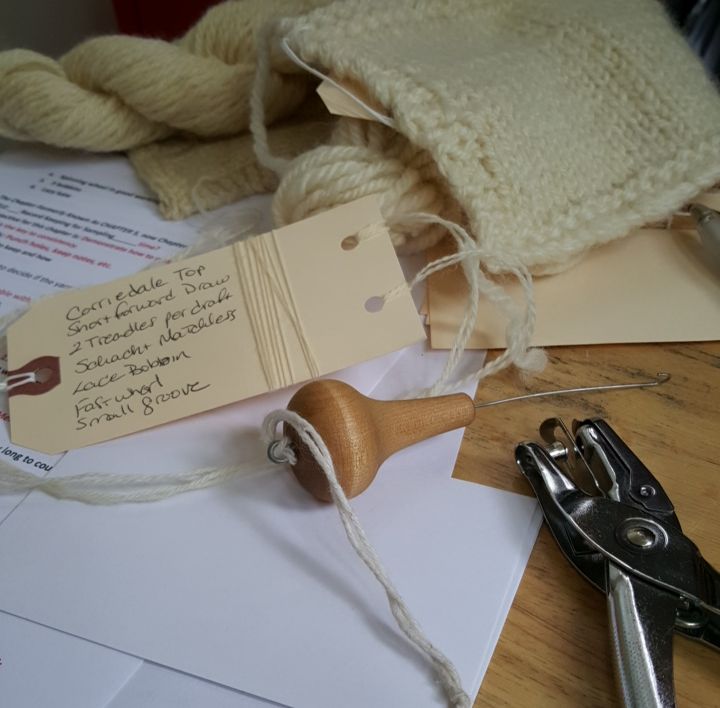 but I neglected to write that. I write the spinning method and often I will add the rhythm I’m using like 12 inch draft to 5 treadles. Again, I didn’t write that here but let me give you a photo of a card I did the right way. This Corriedale project card has all of the information I need to reproduce this yarn. Often I attach it to the swatch or sample I made with the yarn to make sure the yarn would work. All of these samples go into a bag with that breed so I can find them later.
but I neglected to write that. I write the spinning method and often I will add the rhythm I’m using like 12 inch draft to 5 treadles. Again, I didn’t write that here but let me give you a photo of a card I did the right way. This Corriedale project card has all of the information I need to reproduce this yarn. Often I attach it to the swatch or sample I made with the yarn to make sure the yarn would work. All of these samples go into a bag with that breed so I can find them later.